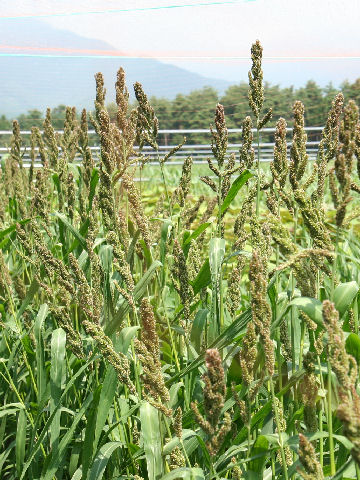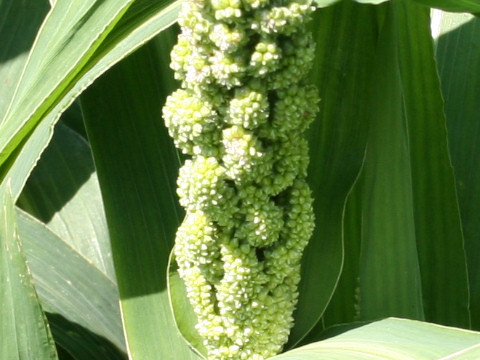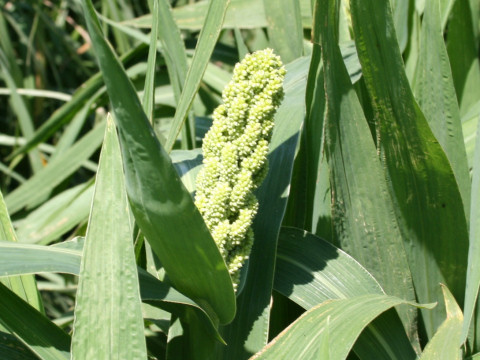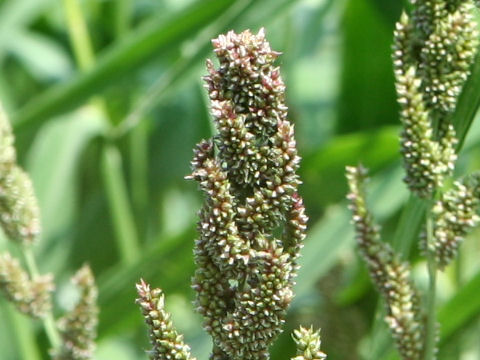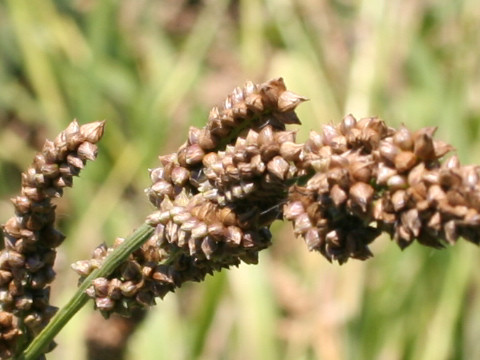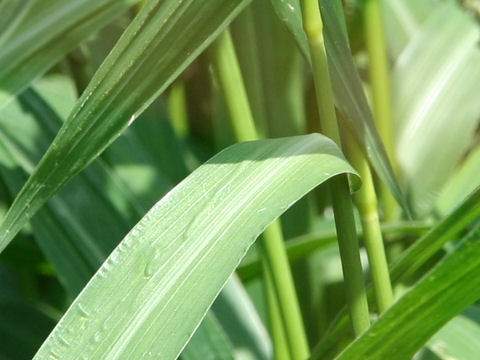
|
The Japanese millet (Echinochloa esculenta) belongs to Poaceae (the Grass family). It is an annual herb that is native to India. It was introduced to Japan from northern Asia during the Jomon period (about 2300-13000 years ago) and was considered a staple food along with the foxtail millet. It prefers cool, moist areas and can be cultivated even in thin soil, reaching a height of over 1 m. It produces light green or purple-brown flowers in racemes at the stem end, which divide from a node at the base of the plant. The seeds are small and yellowish brown to dark brown in color. The grains are edible, the husked barnyard millets are used as food for small birds, and the foliages are used as fodder. The varieties in the photo are: the 2nd and 3rd are "Igawa-zairai" and the rest are "Wase-shiro". It is a C4 plant (Plants with C4-type photosynthesis).
|

